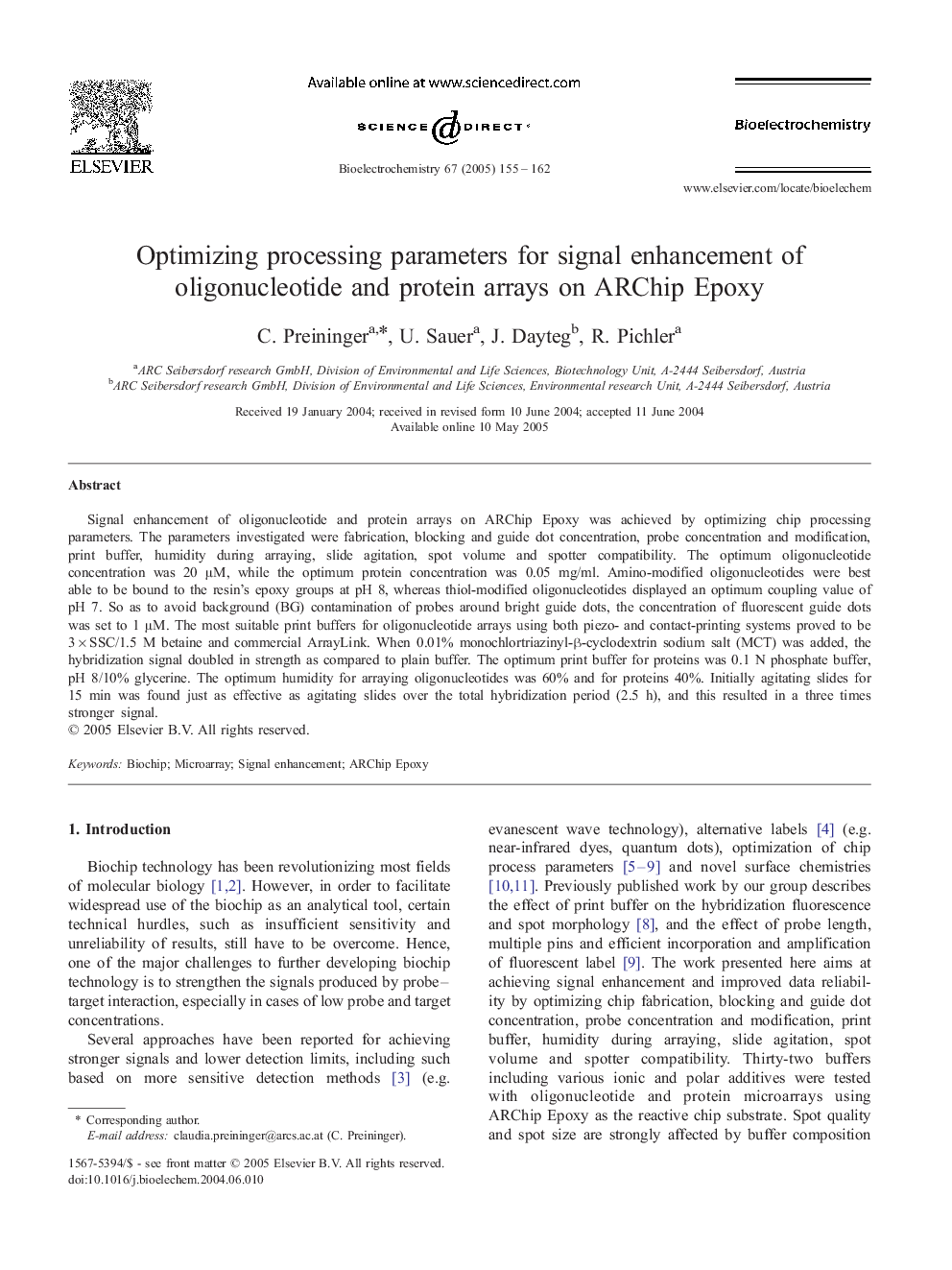| Article ID | Journal | Published Year | Pages | File Type |
|---|---|---|---|---|
| 10567327 | Bioelectrochemistry | 2005 | 8 Pages |
Abstract
Signal enhancement of oligonucleotide and protein arrays on ARChip Epoxy was achieved by optimizing chip processing parameters. The parameters investigated were fabrication, blocking and guide dot concentration, probe concentration and modification, print buffer, humidity during arraying, slide agitation, spot volume and spotter compatibility. The optimum oligonucleotide concentration was 20 μM, while the optimum protein concentration was 0.05 mg/ml. Amino-modified oligonucleotides were best able to be bound to the resin's epoxy groups at pH 8, whereas thiol-modified oligonucleotides displayed an optimum coupling value of pH 7. So as to avoid background (BG) contamination of probes around bright guide dots, the concentration of fluorescent guide dots was set to 1 μM. The most suitable print buffers for oligonucleotide arrays using both piezo- and contact-printing systems proved to be 3 Ã SSC/1.5 M betaine and commercial ArrayLink. When 0.01% monochlortriazinyl-β-cyclodextrin sodium salt (MCT) was added, the hybridization signal doubled in strength as compared to plain buffer. The optimum print buffer for proteins was 0.1 N phosphate buffer, pH 8/10% glycerine. The optimum humidity for arraying oligonucleotides was 60% and for proteins 40%. Initially agitating slides for 15 min was found just as effective as agitating slides over the total hybridization period (2.5 h), and this resulted in a three times stronger signal.
Keywords
Related Topics
Physical Sciences and Engineering
Chemistry
Electrochemistry
Authors
C. Preininger, U. Sauer, J. Dayteg, R. Pichler,
